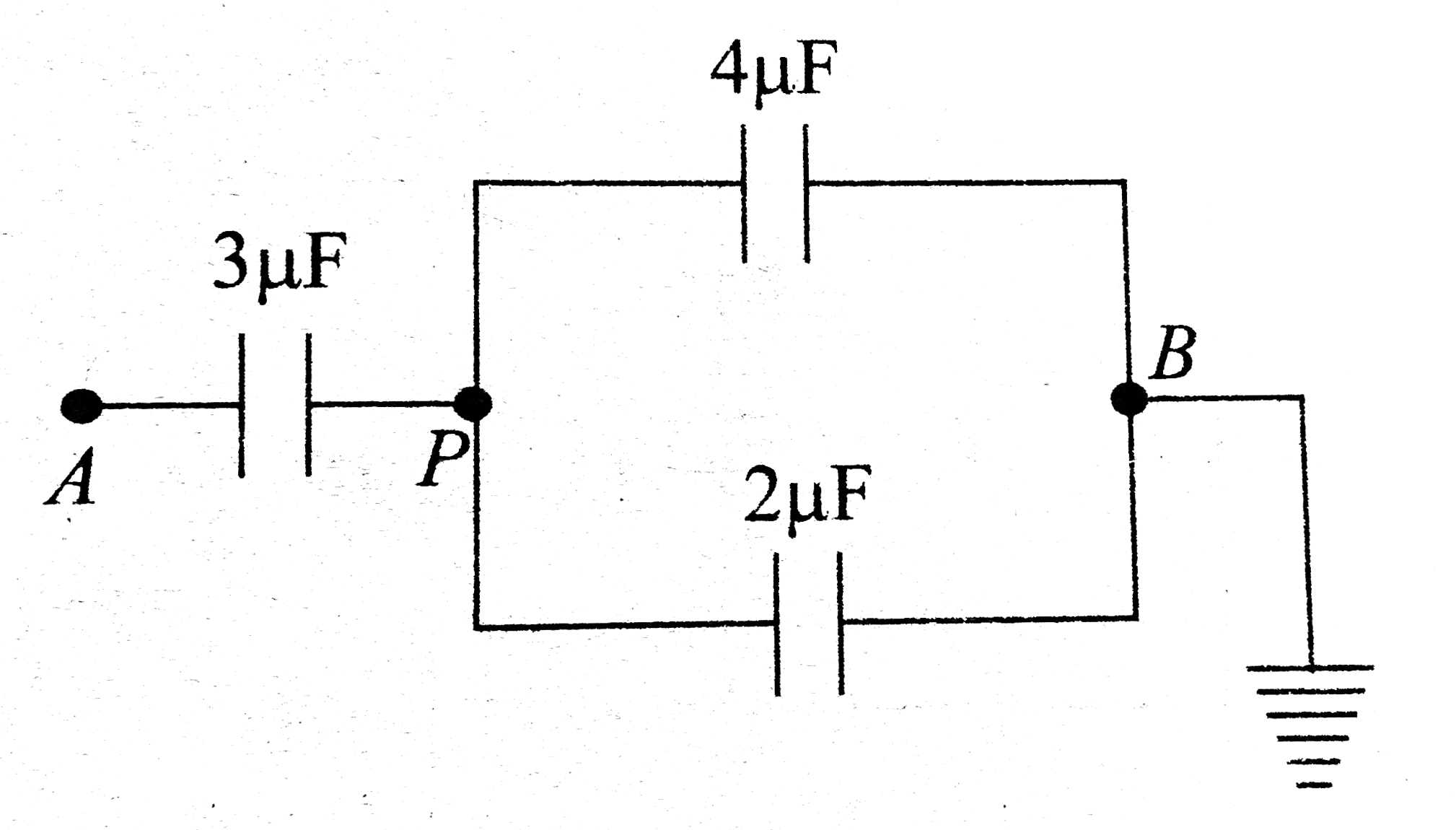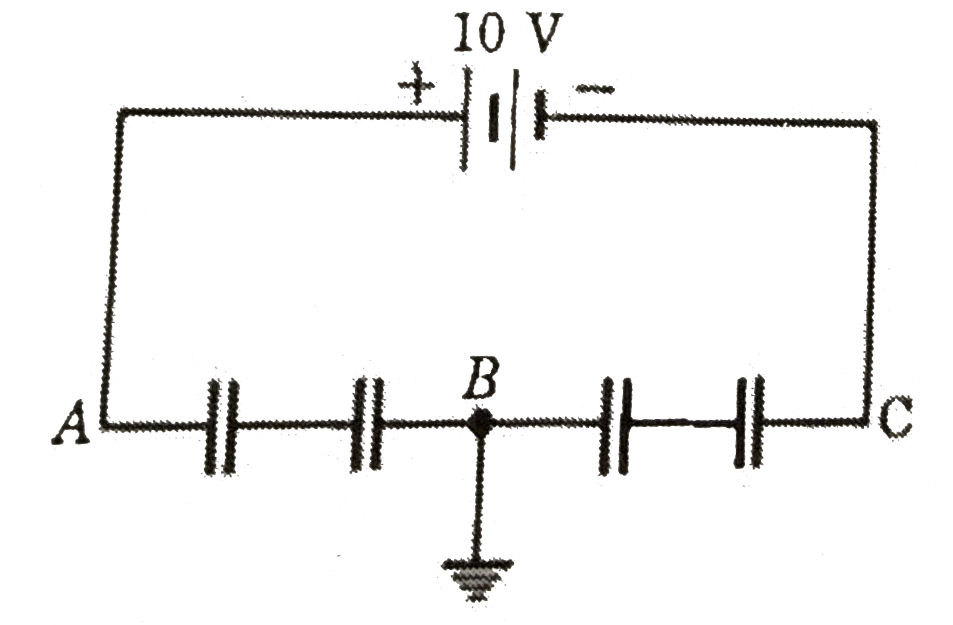In, a potential of +12V is given to point A, and point B is earthed. What is the potential at the point P (in V)?
 .
.
The correct Answer is:4
(4) ΔVAP=Q3,ΔVPB=Q6[∴(4+2)μF=6μF]
Also, Q3+Q6=12 or Q=24μC
ΔVAP=243=8 or VA−VP=8
or 12−VP=8 or VP=4V.
Topper's Solved these Questions
- CAPACITOR AND CAPACITANCEBook:CENGAGE PHYSICSChapter:CAPACITOR AND CAPACITANCEExercise:Comprhension
Explore 35 Videos
- ATOMSBook:CENGAGE PHYSICSChapter:ATOMSExercise:QUESTION BANK
Explore 40 Videos
- CENGAGE PHYSICS DPPBook:CENGAGE PHYSICSChapter:CENGAGE PHYSICS DPPExercise:subjective type
Explore 51 Videos
Similar Questions
Knowledge Check
In the figure a potential of +1200V is given to point A and point B is earthed, what is the potential at the point P ?
 A100VB200VC400VD600V
A100VB200VC400VD600VIn the circuit shown, the point B is earthed. The potential at the point 'A' is
 A14VB24VC26VD50V
A14VB24VC26VD50VIn the given circuit the potential at point B is zero, the potential at points A and D will be
 AVA=4V,VD=9VBVA=3V,VD=4VCVA=9V,VD=3VDVA=4V,VD=3V
AVA=4V,VD=9VBVA=3V,VD=4VCVA=9V,VD=3VDVA=4V,VD=3V
In the given circuit, Fig, if the points b is connected to earth and a potential of +1200 volt is given to the point b is connected to earth and a potential of +1200 volt is given to the point a, calculate the charges acquired by each of the capacitors and the potentials of the point C ?
View SolutionIn figure-3.105, if the potential at point P is 100V, what is the potential at point Q?

View Solution
Four capacitors of equal cpacitances are connected in series with a battery of 10 V, as shown in figure. The middle point B is connected to the earth. What will be the potentials of the points A and C?
View SolutionWhat is meant by saying that the potential difference two points is 1V?
View SolutionThe work done in moving a charge of 2×10−9 C from a point of potential - 3000 V to another point P is 5×10−5J . Find the potential at the point P.
View Solution



